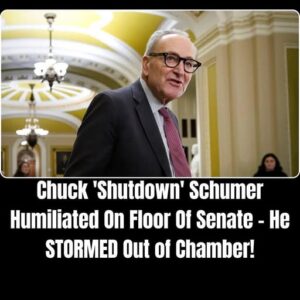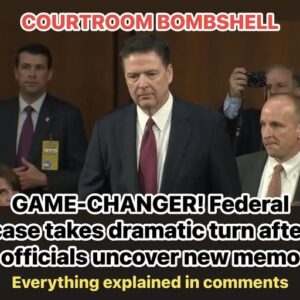In an era dominated by social media, political interpretation often moves faster than verified facts. That reality was on full display this week as a series of messages from a popular data-driven political commentator on X, known as @DataRepublican, ignited heated discussions about communication practices inside the federal government during the transition between administrations.
The account has gained substantial traction in recent months by focusing on public datasets, budget documents, agency reports, and election statistics. Her style — analytical, combative, and highly skeptical of mainstream narratives — has earned her both devoted fans and vocal critics. Regardless of political leanings, many acknowledge that her work often spotlights overlooked details buried in government paperwork.
This week, however, her focus shifted from spreadsheets to internal communications at USAID and the State Department. A recently resurfaced recording — previously reported by NOTUS earlier this year — brought renewed attention to how some agency staff handled internal discussions around the January 20 inauguration.
The Claims and Their Context
The discussion began with @DataRepublican summarizing older reporting suggesting that certain USAID officials moved group discussions off official government platforms and into encrypted messaging channels during the final days before the transfer of power. In her thread, she characterized the move as “major breaking news,” although much of the material she cited had already been publicly documented months earlier.
According to the earlier reports, some former USAID employees said they transitioned internal work chats onto encrypted platforms such as Signal during the handoff period, citing concerns about maintaining professional continuity, safeguarding communications, and staying connected with international partners. In the recording referenced by @DataRepublican, participants describe linking with foreign NGOs shortly after the transition so that ongoing development and humanitarian programs could continue without interruption.
Those revelations triggered strong reactions across the political spectrum. Supporters of the outgoing administration framed the move as suspicious or potentially inappropriate, raising questions about whether such communications should remain on official systems under federal guidelines. Others insisted the employees were simply reacting to a chaotic transition environment, trying to protect sensitive information from uncertainty and disruption.
What is clear is that internal communication practices during political transitions are often messy, imperfect, and subject to intense scrutiny. What remains unclear — even after several rounds of reporting — is whether any of the decisions in question violated policy, broke laws, or were simply the product of a tense and highly politicized handoff.
Accusations of a “Color Revolution”
The most explosive reactions came from corners of social media that interpreted the story through the lens of geopolitical conflict. Some voices used terminology borrowed from global political theory, alleging that moving USAID conversations into encrypted channels was part of a coordinated effort to influence domestic political outcomes. The phrase “color revolution,” invoked by commentators online, carries significant historical baggage: it refers to uprisings in other countries where outside organizations were accused of supporting political transitions.
Applying that label to the internal activities of an American development agency is an extraordinary claim — one that, at this stage, lacks the substantial evidence required to be treated as fact. Analysts across the political spectrum have cautioned against jumping to conclusions based solely on partial recordings and secondhand interpretations.
Even the original reporting from NOTUS, which broke the story months earlier, stopped short of suggesting that USAID employees were orchestrating political activity. Instead, it framed the situation as a reflection of internal unease during a contentious transfer of power — a scenario that has played out in various forms during previous transitions.
The Real Issues at Play
Stripping away the more dramatic language, the underlying question is less about secret plots and more about governance, oversight, and protocol. Federal workers are required to use approved systems for official business. Moving conversations off those platforms, whether out of personal caution or workplace anxiety, raises policy questions that deserve examination.
Experts interviewed by independent outlets emphasized the importance of clear guidelines and strong oversight to prevent unintentional breaches of procedure. They also noted that transitions between administrations — especially when political tensions run high — sometimes produce grey areas where employees make rapid decisions under pressure.
A key challenge for investigative bodies is determining whether these actions were administrative missteps, professional judgment calls, or deliberate attempts to circumvent standard practices. As of now, public documentation does not definitively establish which of those explanations applies.
A Wider Political Environment
The intense reaction to the resurfaced recordings reflects broader political divisions that have defined the post-election landscape. With the federal government now in the midst of a prolonged shutdown and partisan conflict dominating nearly every issue, stories involving federal agencies carry amplified emotional weight.
Supporters of the current administration view the revelations as evidence of institutional resistance to elected leadership. Critics argue that the claims are exaggerated and weaponized for political gain. Meanwhile, neutral observers point out that federal agencies have long struggled with communication protocols during transitions, and the problem is not unique to any single administration.
What often gets lost in the noise is the human element: career employees trying to manage complex programs, international relationships, and sensitive information during periods of uncertainty.
What Happens Next
At the moment, no formal findings have been released suggesting criminal wrongdoing or intentional political interference. Oversight committees may choose to examine the communications practices described in the recordings, but such investigations typically take months and require detailed documentation that goes far beyond social media threads.
If such reviews occur, they will likely focus on:
- Whether official communication policies were violated
- Whether proper authorization existed for the use of encrypted channels
- Whether contacts with international NGOs followed established guidelines
- Whether any actions had measurable impact on domestic political processes
Until evidence is produced that meets investigative and legal thresholds, claims of coordinated political subversion remain speculative.
Conclusion
The resurfaced conversations, the heightened reactions, and the rapid viral spread of the story reveal the unsettled political climate that continues to define Washington. What began as a discussion about communication platforms has ballooned into a debate about transparency, accountability, and trust in federal institutions.
Instead of jumping to the most dramatic possible interpretation, it is worth remembering that clarity takes time, evidence matters, and accountability requires more than conjecture. As more information emerges, the public will need sober analysis — not sensationalism — to understand what really happened and why it matters.





